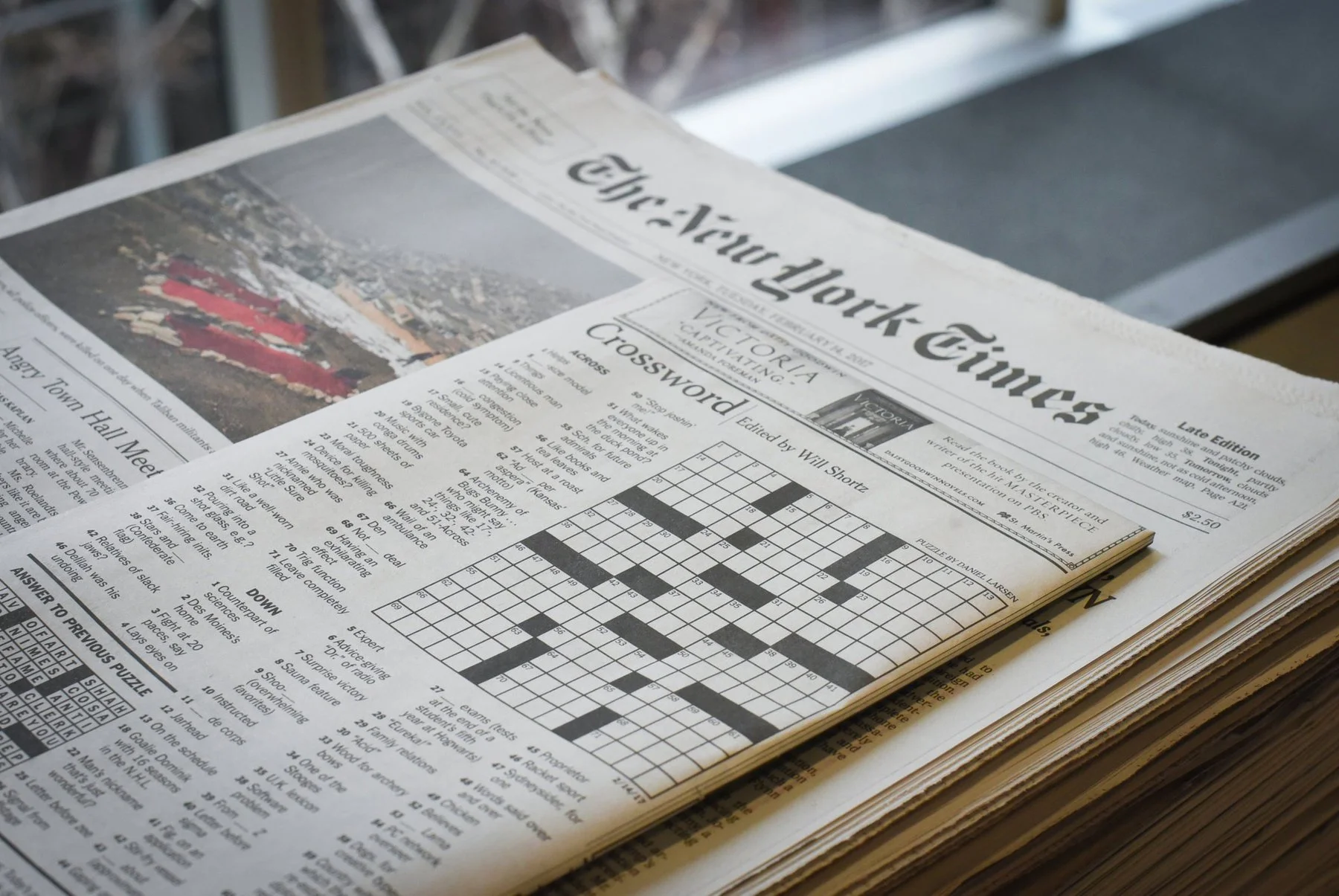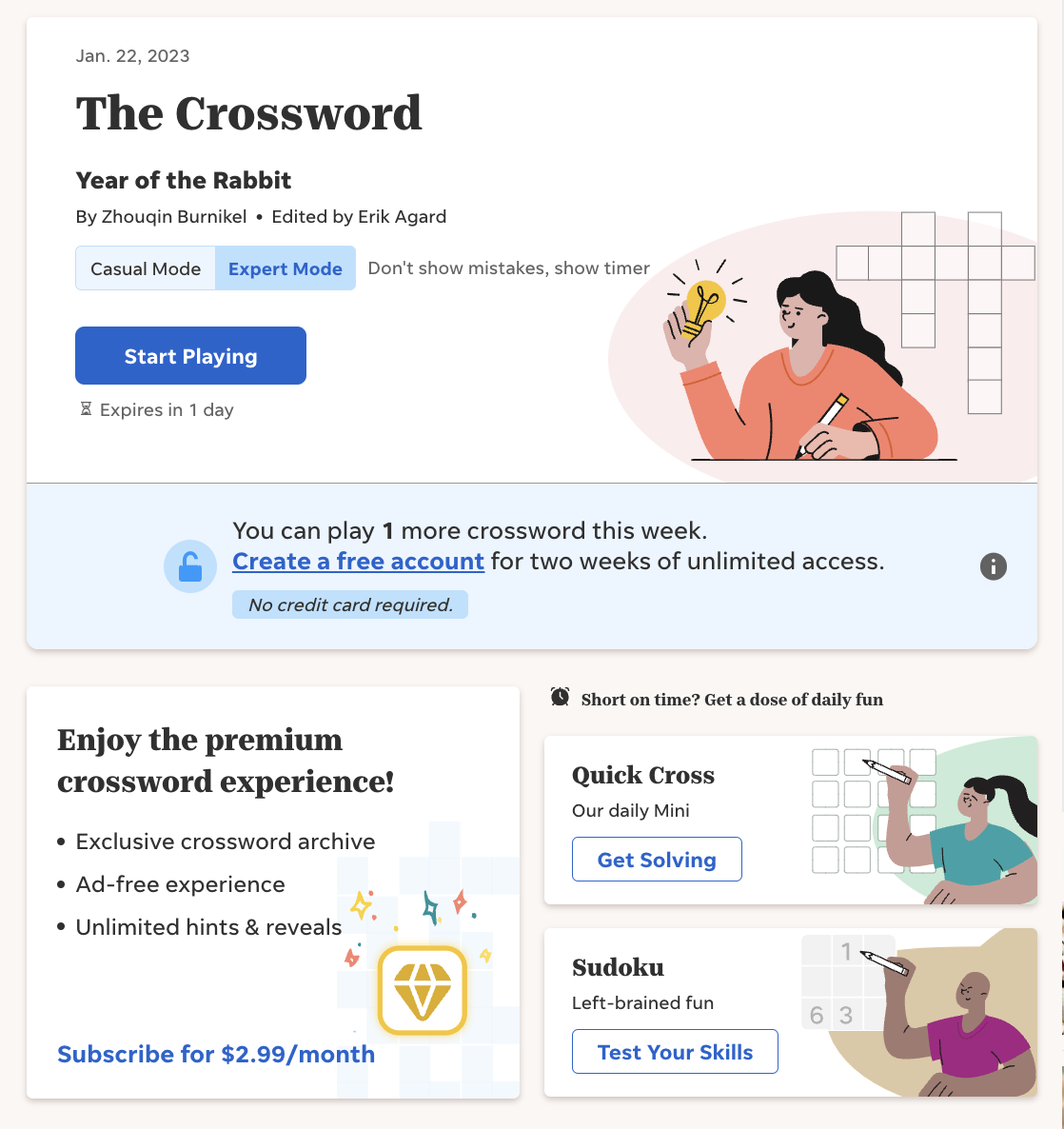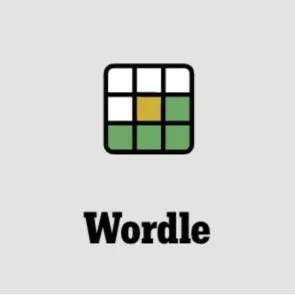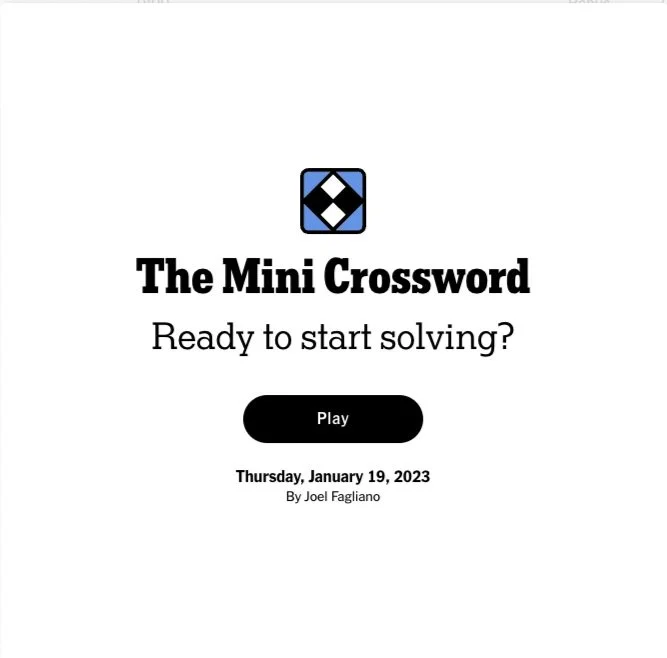
On December 21, 1913, Arthur Wynne, a journalist from Liverpool, published the first ever crossword in a Sunday newspaper, The New York World. Then, the 42-year-old journalist had no idea the sweeping sensation his word puzzle would become. Initially titled “FUN’s Word-Cross Puzzle,” but later changed to Cross-Word because of a typographic error, people flocked to the familiar pattern of grids and clues in troubled times. Wynne’s invention came at the dawn of WW1, and civilians often flipped past the increasingly bleak news from the warfront to indulge in the puzzle. During the 1920s, its popularity continued to soar, with the development of the comic strip “Cross Word Cal.” Yet, while the past of crossword puzzles lies within newspapers and world wars, its future continues on the phones and laptop screens of people all across the world.

The New York Times
While The NYT initially scoffed at the idea of including a crossword with their newspaper, they finally succumbed on February 15, 1942 in an effort to raise American morale after the Japanese bombing of Pearl Harbor only two months prior. Yet, in its usual fashion, The NYT refused to have the second-best crossword, and thus enlisted a best-selling word puzzlist from Simon & Schuster for the task. Soon after, the newspaper that had resisted the crossword’s initial craze secured for itself the title of the most well-known crossword in the nation.
The New York Times | photography
“I got into crosswords during the pandemic, but my family has always been a fan of word puzzles.”
— Garrett Yeats, Latin Teacher

Just as the American public turned to crosswords in the 20th century due to the terrifying nature of the World Wars, the puzzle’s popularity soared in 21st century: first with the recession and, in more recent memory, the Covid-19 pandemic. In a time of isolation and anxiety, crosswords were a source of excitement amongst a frightened American public. Crosswords became a way for people to learn new words, keep up with pop culture, and engage with friends and family despite their confinement.
Google Trends | graph
“They’re just a great way to challenge yourself and others, and are a great way to learn more and expand your general awareness of things.”
— Dhruv Singh, Crossword Ambassador

USA Today
Though The NYT holds the crown for the greatest crossword offered by an American newspaper, their large daily crossword remains blocked from non-subscribers. Thus, many Northview students have turned to the free option that remains accessible despite the heavy censorship of Fulton County’s IT department: USA Today. The website offers a free crossword twice a week to non-subscribers, making it the prime destination for casual crossword connoisseurs.
USA Today | graphic
“I like the sense of competition and trying to complete them quicker than my friends.”
— Sasha Borislow, Ohio Resident

Subsequent Puzzles
A word puzzle created by software engineer Josh Wardle for his wife, Wordle blew up in 2021. The puzzle focused on giving users 6 tries to guess a 5 letter word. Because of its sweeping popularity, The New York Times purchased the game in 2022.
A smaller version of the daily crossword, the mini comprises of roughly 8-10 clues. Its “leaderboard” function and small-scale make the mini a more accessible and social forum for puzzlers.
The New York Times | graphic
Web Page Design by SUJANA VANGALA





